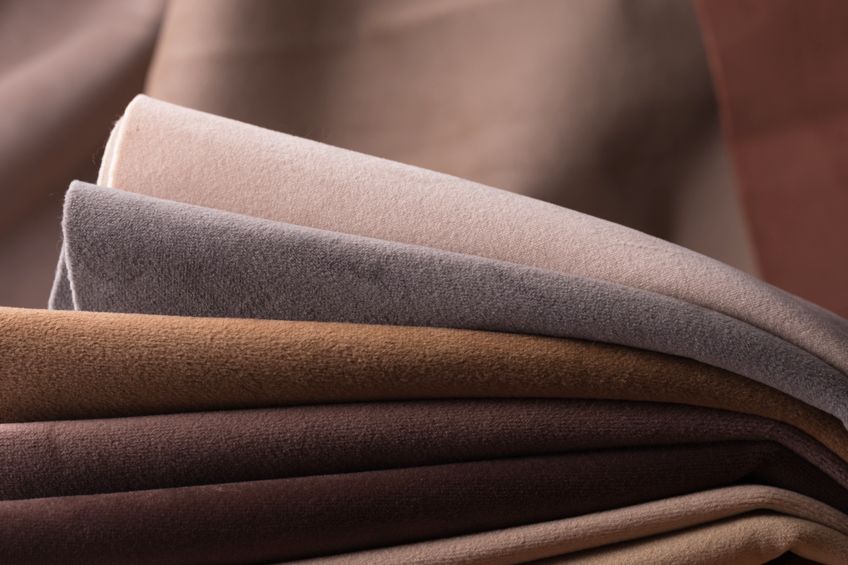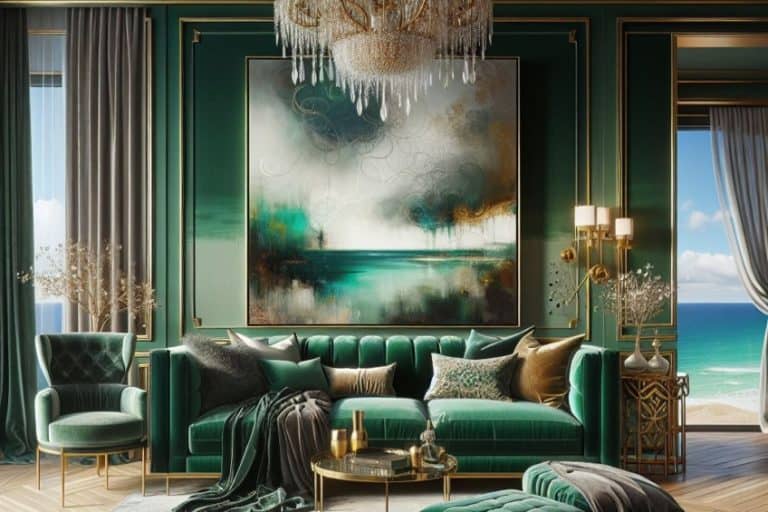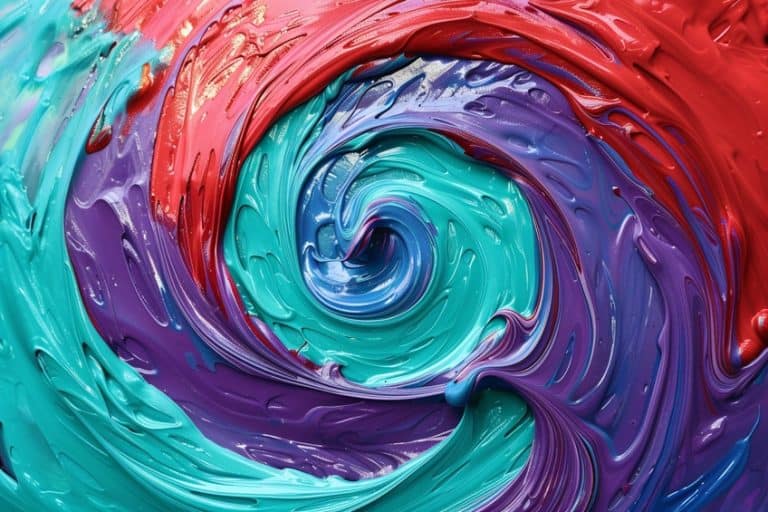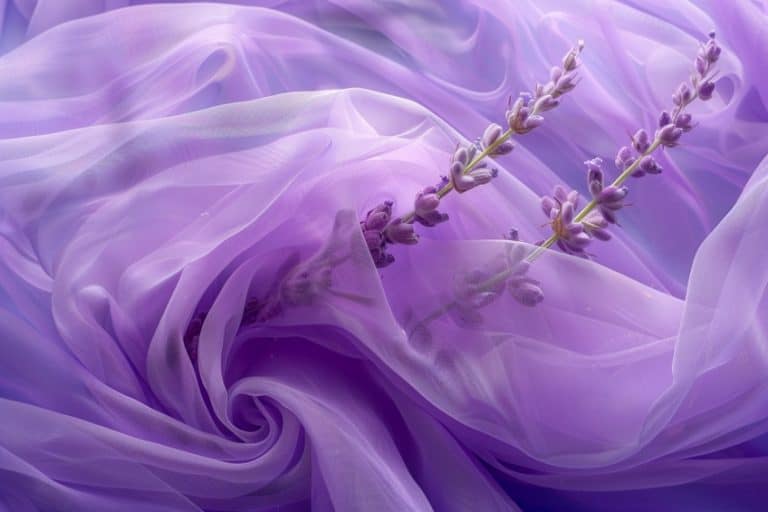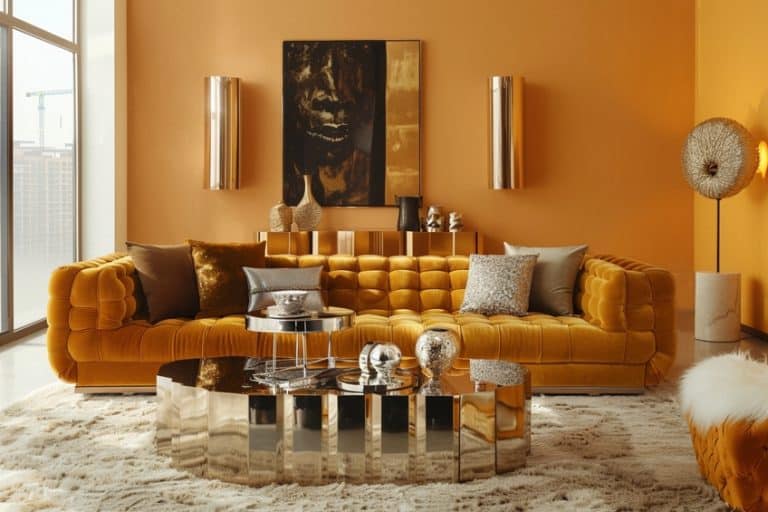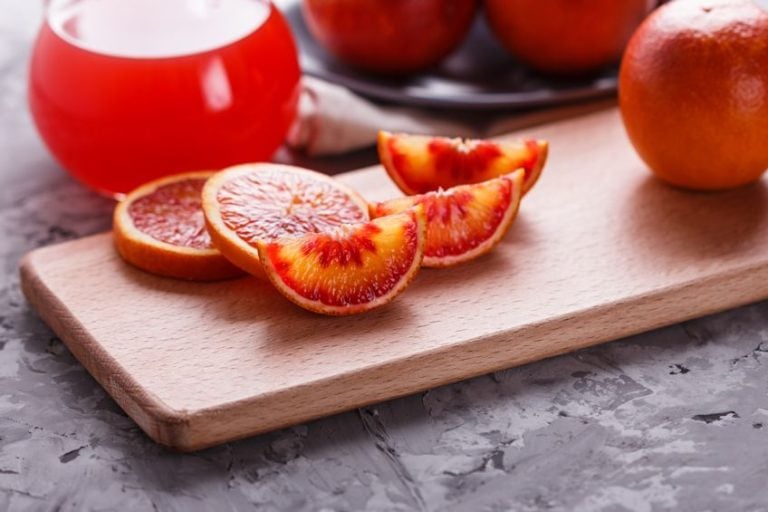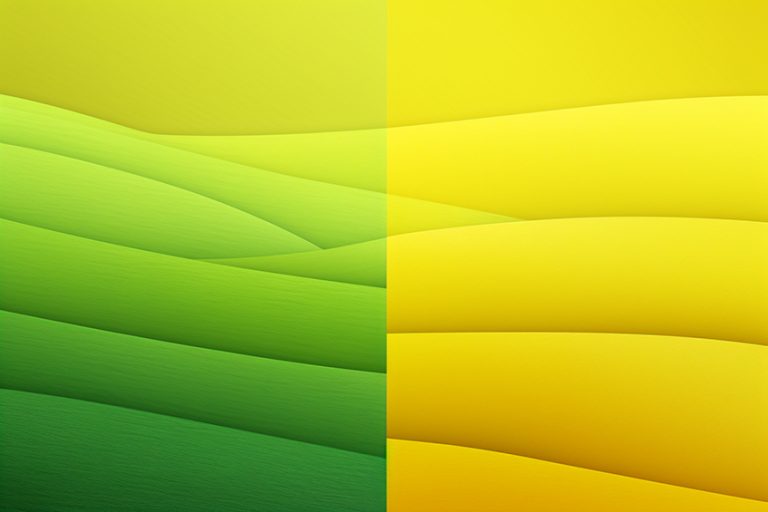Taupe Color – A Deep Dive Into the Wonderful Shades of Taupe
If you are only beginning to learn about colors, you might be wondering, “what color is taupe anyway?” A taupe color can be seen as something of a neutral color, somewhere between brown and gray. This makes taupe a versatile color and can be used in all kinds of design projects from decorating your home to advertising, fashion design, and art.
What Color Is Taupe?
Is taupe gray or brown? This is the question many ask themselves, as it can go either way, depending on how you see the color. As mentioned, you can place the color somewhere between brown and gray as it shares some qualities of both these colors. So, a taupe color can be seen as many colors from brown-gray to a dark tan. Many designers may even argue over what the color truly means.
Since a taupe color is considered a neutral color, it can be created by blending complementary colors.
To understand what a complementary color is, you should be familiar with the fundamentals of color theory. First, most know what the primary and secondary colors are, and these and more colors can be located on what is known as the color wheel.
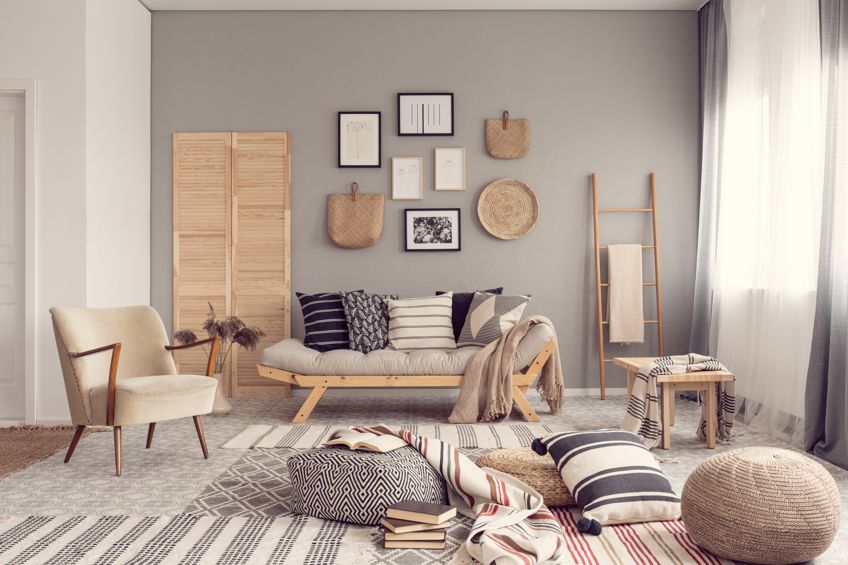
The color wheel is simply a visual image of colors for easy reference. All these colors interact with each other in various ways, for example, your complementary colors are colors that are located on opposite sides of one another on the color wheel. These colors work great at forming contrast when placed alongside each other, but when blended, they create a more neutral and muted brownish-gray color.
So, taupe can be seen as grayish-brown, brownish-gray, or even a warm gray. However, you can also get taupe colors that have cooler undertones. What are warm gray and cool gray undertones? Again, this goes back to color theory. Colors have a color bias or temperature, which can either be warm or cool.
This is easy to determine as colors like blue and green remind us of the ocean or forests and are cool.
Red, yellow, as well as orange, are warm and remind us of sunshine and heat. So, warmer colors tend to have reddish undertones, while cooler colors have blue or green undertones. You can now see why it is so challenging to pinpoint what a taupe color is.
Some may also confuse taupe with what is known as greige. However, this color is more gray-beige and tends to be cooler due to it being more on the gray side, while taupe leans more to warmer tones. They are quite similar, some may even say that greige is a shade of taupe, while others say they fall in different categories.
Meaning of Taupe Color
Since a taupe color is more neutral, it can be used for many applications and carries a timeless look about it. The color can be seen as modest and is a color that always remains in style no matter what the season. Taupe shares characteristics of both your brown and gray colors and can create a calm, comforting, and sophisticated mood. Since you have various shades of taupe today, the meaning can change subtly according to the undertone. Darker shades can be stylish and dependable, but they can also become depressive.
The lighter shades of taupe offer a more consistent welcoming feeling.
So, taupe is a color that does not stand out, yet can provide a warm and welcoming atmosphere. Too much of it though can become boring, predictable, and monotonous. When looking at the psychology of this color, people who prefer the color can be seen as dependable. They are modest, and just like the color, do not like being the center of attention. However, others enjoy being in their company. They can also be seen as adventurous, however, on the other hand, they can also be overly cautious, appear dull, and uninteresting.
Shades of Taupe
With the advent of technology and computers, we can create thousands of different colors with various shades and tints of each. To identify these colors, various codes have been created. These can be used to create colors online and helps you to print out the exact colors you want. If you want to find a color, simply identify its hex code, which represents your color values.
Other codes include your RGB and CMYK codes that help you to see how much of each color is used online and for printing applications. Let us now see what shades of taupe are out there.
| Color Shade Name | Hex Code | RGB | CMYK (%) | Color Visualization |
| Beaver | #9F8170 | 159, 129, 112 | 0, 19, 30, 38 | |
| Beige Taupe | #927C66 | 146, 124, 102 | 0, 15, 30, 43 | |
| Cafe Au Lait | #A67B5B | 166, 123, 91 | 0, 26, 45, 35 | |
| Champagne Beige | #DBC4A0 | 219, 196, 160 | 0, 11, 27, 14 | |
| Cinereous | #98817B | 152, 129, 123 | 0, 15, 19, 40 | |
| Classic Taupe | #D3BBA4 | 211, 187, 164 | 0, 11, 22, 17 | |
| Cool Taupe | #8B8589 | 139, 133, 137 | 0, 4, 1, 45 | |
| Dark Taupe | #483c32 | 72, 60, 50 | 0, 17, 31, 72 | |
| Deep Taupe | #7E5E60 | 126, 94, 96 | 0, 25, 24, 51 | |
| Desert Taupe | #8d7e71 | 141, 126, 113 | 0, 11, 20, 45 | |
| Driftwood | #C2AD9A | 194, 173, 154 | 0, 11, 21, 24 | |
| Falcon | #6e5a5b | 110, 90, 91 | 0, 18, 17, 57 | |
| French Taupe | #d3c2bf | 211, 194, 191 | 0, 8, 9, 17 | |
| Golden Taupe | #C9B489 | 201, 180, 137 | 0, 10, 32, 21 | |
| Greige | #B0A999 | 176, 169, 153 | 0, 4, 13, 31 | |
| Hickory | #D0A168 | 208, 161, 104 | 0, 23, 50, 18 | |
| Khaki Taupe | #c7c9c5 | 199, 201, 197 | 1, 0, 2, 21 | |
| Light Taupe | #B38B6D | 179, 139, 109 | 0, 22, 39, 30 | |
| Matte Taupe | #403833 | 64, 56, 51 | 0, 13, 20, 75 | |
| Mauve Taupe | #915F6D | 145, 95, 109 | 0, 34, 25, 43 | |
| Medium Taupe | #674C47 | 103, 76, 71 | 0, 26, 31, 60 | |
| Mink | #8B807E | 139, 128, 126 | 0, 8, 9, 45 | |
| Misty Taupe | #625B57 | 98, 91, 87 | 0, 7, 11, 62 | |
| Mushroom | #A89C90 | 168, 156, 144 | 0, 7, 14, 34 | |
| Muted Stole | #b4a19d | 180, 161, 157 | 0, 11, 13, 29 | |
| Neutral Taupe | #544C49 | 84, 76, 73 | 0, 10, 13, 67 | |
| Otter Brown | #654321 | 101, 67, 33 | 0, 34, 67, 60 | |
| Pale Taupe | #5B544D | 91, 84, 77 | 0, 8, 15, 64 | |
| Pastel Taupe | #75655A | 117, 101, 90 | 0, 14, 23, 54 | |
| Platinum | #E5E4E2 | 229, 228, 226 | 0, 0, 1, 10 | |
| Plaza Taupe | #aea393 | 174, 163, 147 | 0, 6, 16, 32 | |
| Puce | #CC8899 | 204, 136, 153 | 0, 33, 25, 20 | |
| Purple Taupe | #50404d | 80, 64, 77 | 0, 20, 4, 69 | |
| Rose Taupe | #905D5D | 144, 93, 93 | 0, 35, 35, 44 | |
| Rustic Taupe | #a69c92 | 166, 156, 146 | 0, 6, 12, 35 | |
| Sandy Taupe | #967117 | 150, 113, 23 | 0, 25, 85, 41 | |
| Silver Taupe | #D5C9C0 | 213, 201, 192 | 0, 6, 10, 16 | |
| Simply Taupe | #ad9f93 | 173, 159, 147 | 0, 8, 15, 32 | |
| Smokey Taupe | #CDC2B7 | 205, 194, 183 | 0, 5, 11, 20 | |
| Taos Taupe | #bfa77f | 191, 167, 127 | 0, 13, 34, 25 | |
| Taupe | #483C32 | 72, 60, 50 | 0, 17, 31, 72 | |
| Taupe Brown | #674C47 | 103, 76, 71 | 0, 26, 31, 60 | |
| Taupe Gray | #8B8589 | 139, 133, 137 | 0, 4, 1, 45 | |
| Taupe Haze | #756A61 | 117, 106, 97 | 0, 9, 17, 54 | |
| Taupe Mist | #e0d8d2 | 224, 216, 210 | 0, 4, 6, 12 | |
| Taupe Sand | #ddcdba | 221, 205, 186 | 0, 7, 16, 13 | |
| Timberwolf | #DBD7D2 | 219, 215, 210 | 0, 2, 4, 14 | |
| Van Dyke Brown | #664228 | 102, 66, 40 | 0, 35, 61, 60 | |
| Vintage Taupe | #f2ede8 | 242, 237, 232 | 0, 2, 4, 5 | |
| Warm Taupe | #B29785 | 178, 151, 133 | 0, 15, 25, 30 | |
| Wenge | #645452 | 100, 84, 82 | 0, 16, 18, 61 |
What Colors Go With Taupe?
As we have established, taupe is more of a neutral color that is a grayish brown that can come in a variety of shades. Generally, taupe works well with softer, warm colors, for example, pink, yellow, orange, or olive tones. However, it can also work well with cooler shades like pale lavender and various shades of blue or green. Taupe is versatile, but it is also influenced by the undertone of the colors being used.
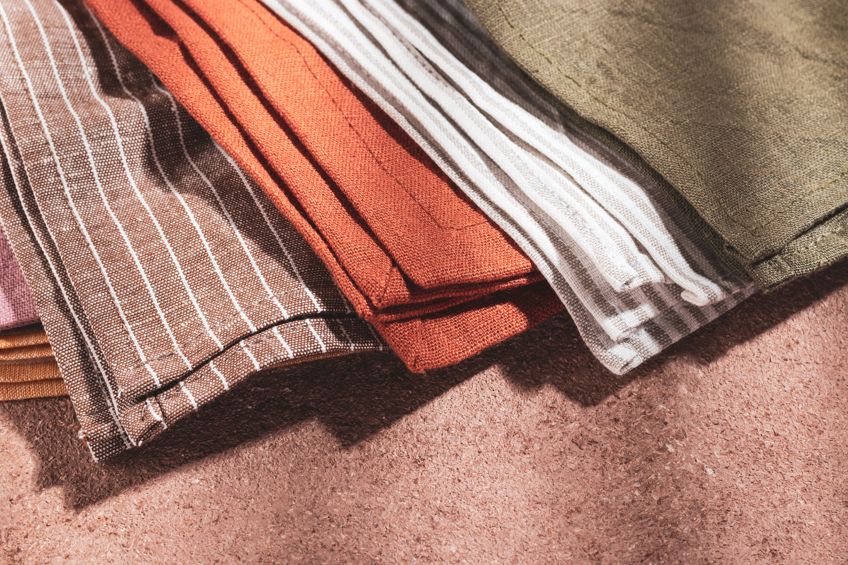
Taupe and Warm Colors
In most cases, taupe tends to lean towards warmer colors. These colors generally have a reddish or purplish-pinkish undertone that will work well with other warm colors. For example, pastel or muted colors like soft yellow, pastel pink, and olive green. You might think olive green is a cooler color, however, it is more of a warm green with a yellow undertone.
You can also try using bolder colors with taupe like fuchsia.
| Taupe Shade | Taupe Hex Code | CMYK Taupe Color Code (%) | RGB Taupe Color Code | Color |
| Light Taupe | #b38B6d | 0, 22, 39, 30 | 179, 139, 109 | |
| Soft Yellow | #eeee9b | 0, 0, 35, 7 | 238, 238, 155 | |
| Pastel Pink | #f8c8dc | 0, 19, 11, 3 | 248, 200, 220 | |
| Olive Green | #bab86c | 0, 1, 42, 27 | 186, 184, 108 | |
| Fuchsia | #d958a0 | 0, 59, 26, 15 | 217, 88, 160 |
Taupe and Cool Colors
Depending on your undertone, your shades of blue can be seen as a complementary color to your dominant gray taupe tones. So, shades of taupe with more of a gray or violet undertone can work well with cooler colors. When it comes to a gray taupe, sky blue is a good option that can pair well with the taupe color. Light green, cool lavender, and even bolder colors like turquoise are also options to pair with taupe.
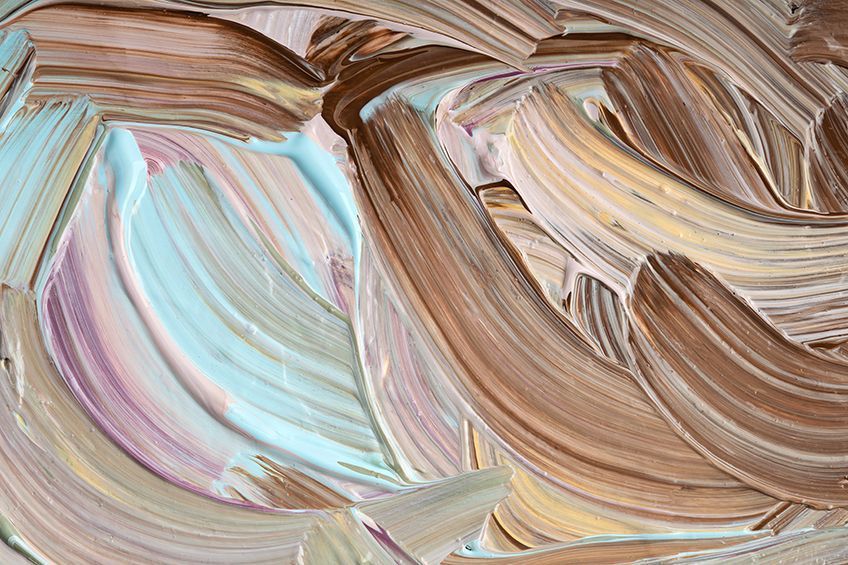
| Taupe Shade | Taupe Hex Code | CMYK Taupe Color Code (%) | RGB Taupe Color Code | Color |
| Gray Taupe | #8b8589 | 0, 4, 1, 45 | 139, 133, 137 | |
| Sky Blue | #87ceeb | 43, 12, 0, 8 | 135, 206, 235 | |
| Light Green | #90ee90 | 39, 0, 39, 7 | 144, 238, 144 | |
| Cool Lavender | #b3a6a5 | 0, 7, 8, 30 | 179, 166, 165 | |
| Turquoise | #30d5c8 | 77, 0, 6, 16 | 48, 213, 200 |
Taupe Analogous Colors
These are colors located close to each other or alongside one another when viewing the color wheel. These colors always work best when used together. For example, a darker gray-yellow color known as cola, and dark gray-red known as temptress.
You can also use lighter shades when dealing with these colors.
| Taupe Shade | Taupe Hex Code | CMYK Taupe Color Code (%) | RGB Taupe Color Code | Color |
| Dark Taupe | #483c32 | 0, 17, 31, 72 | 72, 60, 50 | |
| Cola | #343425 | 0, 0, 29, 80 | 52, 52, 37 | |
| Temptress | #342526 | 0, 29, 27, 80 | 52, 37, 38 |
A Brief History
Since taupe is not that easy to define, it does not have a vast historical background as your blue and red colors. However, we can trace back where the word originated from. The name originates from the French word, taupe, and the Latin word, Talpa, which means mole. The color was used to describe what a French mole looked like.
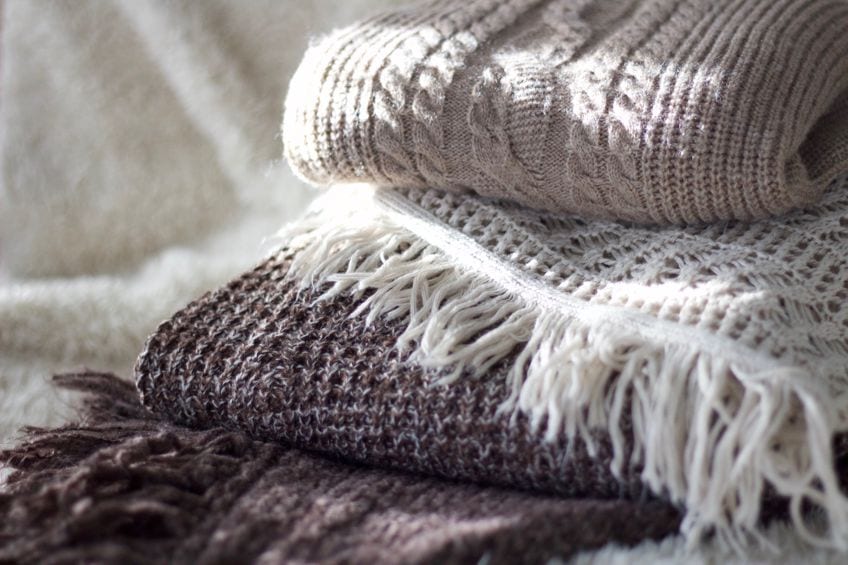
The taupe color has been mentioned in A Dictionary of Color in the 1930s. This book states that the word taupe was used in English in the early 19th century, but the first record or reference to the word was used in the Oxford Dictionary in the early 1900s. Naturally, later in the 20th century, the color gained a more extensive range of different shades. Some of these different shades of taupe have emerged as part of a Pantone color palette, for example, warm taupe in 2016.
Taupe and Home Design
Since taupe is considered a more neutral tone, it is quite popular in interior designs. Many designers may choose taupe as it forms a great background for more vibrant colors. Otherwise, too much taupe or other neutral colors can become bland.
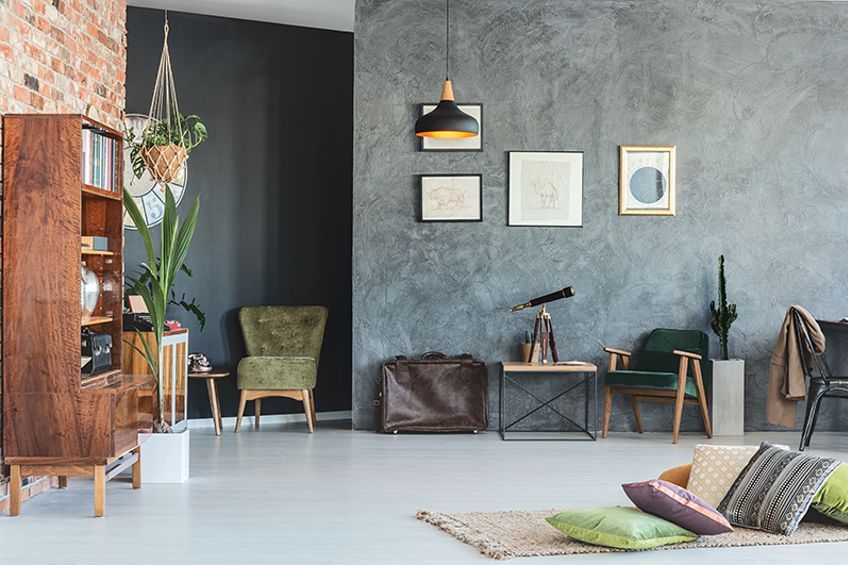
Taupe Walls
A taupe color can be amazing and works well with all styles, and as mentioned, it creates a wonderful background in a neutral room design. Adding some soft yellows, and other pastel colors will provide a more romantic style. However, you can also use more vibrant colors like fuchsia or aqua, which can bring more life to a room.
Taupe can also be used along with other neutrals like white and tan to create a more welcoming and cozier atmosphere.
| Taupe Shade | Taupe Hex Code | CMYK Taupe Color Code (%) | RGB Taupe Color Code | Color |
| Dark Taupe | #483c32 | 0, 17, 31, 72 | 72, 60, 50 | |
| Tan | #d2b48c | 0, 14, 33, 18 | 210, 180, 140 | |
| White | #ffffff | 0, 0, 0, 0 | 255, 255, 255 |
When deciding on taupe walls, you can consider both paints as well as wallpaper. Both of these can bring in a sense of light and warmth. Remember, that taupe can work well with most colors, but it is best to use it with colors that have similar undertones. Cooler taupe shades can work well in bathrooms and bedrooms to add a more calming effect. Warmer shades of taupe can work nicely in larger spaces, creating a more inviting atmosphere. Although darker shades also do better in larger open spaces. Lighter shades of taupe can also be a better choice for smaller rooms and narrow hallways.
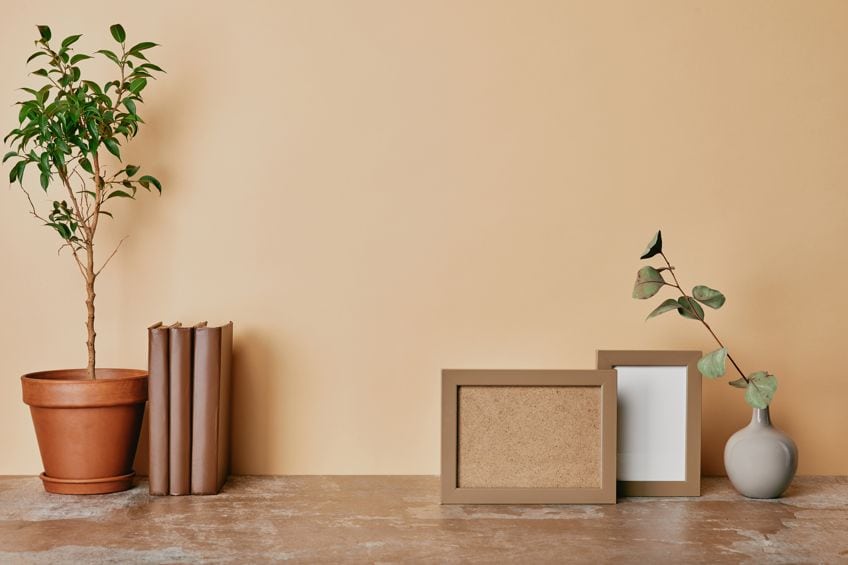
You might also consider using a darker shade of taupe for room finishes, with a white theme, or use the darker shade of taupe theme with white finishes. The aim is to create balanced contrast in a room for the best look. Darker shades of taupe can also work well as an accent wall. When it comes to taupe walls, try to create more contrast by adding a more colorful pattern on the walls. This can be done by using stencils.
All types of natural flooring can also help build a layered color effect and add contrast to a room with taupe walls. Mahogany, walnut, or warm wooden flooring, tables, shelves, or accessories can work well with shades of taupe. Not only wooden floors, but you can also consider stone flooring and ceramic tile flooring.
You can choose taupe colors for flooring as well, however, this is a more permanent choice than simply painting walls and you should be committed to your choice.
Taupe Color Scheme and Accessories
You can use taupe color as your background and add in accent colors. This can be pillows, drapes, throws, furniture, bedding, vases, and wall art amongst other ideas. Depending on the shade of taupe, you can easily add in various shades of pinks, blues, and greens for pops of color throughout a room.
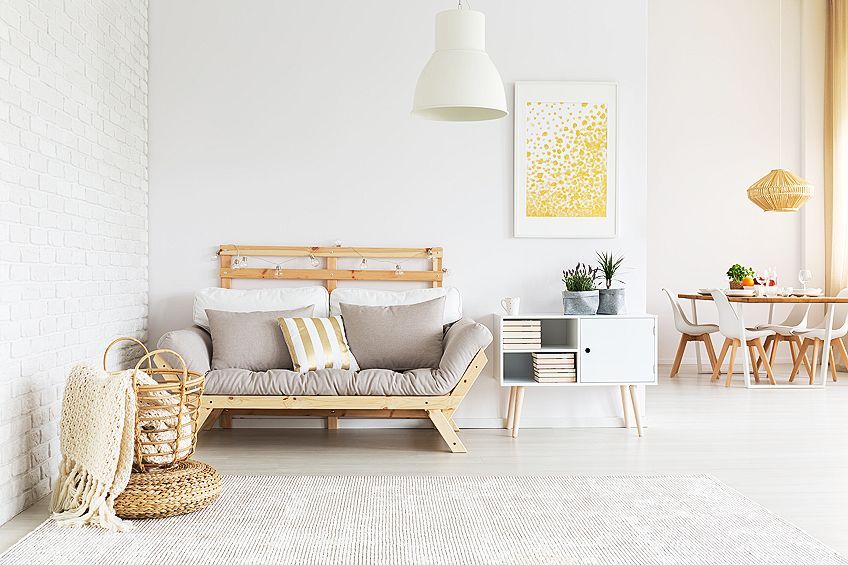
Metallic colors can also work well with taupe and can add a more industrial look to your kitchen with metallic lampshades, fixtures, chairs, and other items. You can tone it down a bit for use in other rooms by adding fewer metallic items like a simple metallic color vase. Pewter, bronze, brass, and nickel are popular choices. Taupe can look great together with gold or silver. If you are using taupe as a background color, these items will look perfect against this color.
- Silver or gold clocks
- Pictures with color, especially something with turquoise or fuchsia)
- Beautiful white macrame wall hangings
- Frameless black and white photos
- Colorful flower decorations
Taupe color accessories can also be used in a neutral white room, especially a darker taupe as it adds a nice contrast with a white background. A beautiful gray taupe throw and some pillows can provide a more calming effect to a bedroom. Add in textures like raised patterns in pillow covers or a tufted headboard for added effect
We now hope you have a better understanding of what color taupe is. Whether you see it as more gray, brown, or tan, it remains a versatile color that you can use in web design, interior design, and art. Not only that, but you can use taupe with most other colors, making it an easy color to work with. Even though taupe is not the most well-known color, it may be a good idea to give it a try the next time you are looking for a more unique neutral color.
Frequently Asked Questions
Is Taupe Gray or Brown?
There is some debate about the color taupe as many have different views on the subject. Generally, it is considered to be somewhere in-between gray and brown. However, you get various shades of taupe, which can have various undertones.
What Colors Go With Taupe?
Taupe is regarded as a neutral color, and it goes with most colors. The best option is usually your pastel colors, especially pink and soft yellows. However, taupe can also work well with various shades of blue and green. Bold colors like fuchsia or turquoise can also work well with taupe. It all depends on the tone of taupe paint you are using.
How Can You Make Taupe Paint?
All you need to make a taupe color with paint, are your three primary colors. Place a small amount of blue, yellow, and red on a mixing surface, and then use a palette knife to mix all colors. You should land up with a dark brown. You then add white, which produces more of a brown-gray.
Where Can You Use Taupe in the Home?
The taupe color is versatile, and you can apply the color in any room in the home. The color can be used as your color theme and background, or it can be incorporated into other color schemes by using as an accent color.
In 2005, Charlene completed her Wellness Diplomas in Therapeutic Aromatherapy and Reflexology from the International School of Reflexology and Meridian Therapy. She worked for a company offering corporate wellness programs for a couple of years, before opening up her own therapy practice. It was in 2015 that a friend, who was a digital marketer, asked her to join her company as a content creator, and this is where she found her excitement for writing.
Since joining the content writing world, she has gained a lot of experience over the years writing on a diverse selection of topics, from beauty, health, wellness, travel, and more. Due to various circumstances, she had to close her therapy practice and is now a full-time freelance writer. Being a creative person, she could not pass up the opportunity to contribute to the Art in Context team, where is was in her element, writing about a variety of art and craft topics. Contributing articles for over three years now, her knowledge in this area has grown, and she has gotten to explore her creativity and improve her research and writing skills.
Charlene Lewis has been working for artincontext.org since the relaunch in 2020. She is an experienced writer and mainly focuses on the topics of color theory, painting and drawing.
Learn more about Charlene Lewis and the Art in Context Team.
Cite this Article
Charlene, Lewis, “Taupe Color – A Deep Dive Into the Wonderful Shades of Taupe.” Art in Context. April 19, 2022. URL: https://artincontext.org/taupe-color/
Lewis, C. (2022, 19 April). Taupe Color – A Deep Dive Into the Wonderful Shades of Taupe. Art in Context. https://artincontext.org/taupe-color/
Lewis, Charlene. “Taupe Color – A Deep Dive Into the Wonderful Shades of Taupe.” Art in Context, April 19, 2022. https://artincontext.org/taupe-color/.


